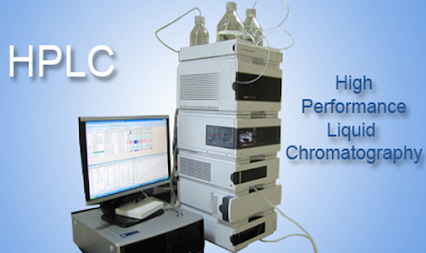Demystifying HPLC: A Comprehensive Guide to High-Performance Liquid Chromatography
Introduction:
High-performance liquid chromatography (HPLC) is a powerful analytical technique widely used in various industries, including pharmaceuticals, environmental analysis, food and beverage, forensics, and more. This blog aims to provide a detailed overview of HPLC, its principles, instrumentation, applications, and the key factors that contribute to its effectiveness in separating and analyzing complex mixtures.
Understanding HPLC:
1.1 Principles of HPLC:
HPLC is a chromatographic technique that utilizes a liquid mobile phase to separate and analyze components of a sample. It relies on the differential interaction of analytes with a stationary phase (usually a solid or a liquid immobilized on a solid support) and a mobile phase (a liquid solvent or mixture). The analytes are separated based on their different affinities for the stationary phase, resulting in distinct retention times.
1.2 Components of an HPLC System:
An HPLC system consists of several key components:
Mobile Phase: It is a solvent or mixture of solvents that carries the sample through the system.
Injection System: The sample is introduced into the system using an autosampler or manual injection.
Column: It contains the stationary phase responsible for the separation.
Pump: It delivers the mobile phase at a constant flow rate, ensuring reproducible results.
Detector: It measures the concentration of analytes as they elute from the column.
Data Acquisition and Analysis: Software used to control the instrument, acquire data, and analyze the results.
HPLC Modes:
HPLC can be performed using different modes to achieve the desired separation based on the sample characteristics:
Reverse Phase Chromatography (RPC): The stationary phase is nonpolar, and the mobile phase is polar. Suitable for separating compounds with varying polarities.
Normal Phase Chromatography (NPC): The stationary phase is polar, and the mobile phase is nonpolar. Effective for separating highly polar compounds.
Ion Exchange Chromatography (IEC): Separates analytes based on their charge using a charged stationary phase.
Size Exclusion Chromatography (SEC): Analytes are separated based on their size as they pass through a porous stationary phase.
Chiral Chromatography: Separates enantiomers (mirror-image isomers) using a chiral stationary phase.
Key Parameters in HPLC:
3.1 Retention Time:
Retention time is the time taken for an analyte to elute from the column after injection. It is a crucial parameter used for identification and quantification of analytes.
3.2 Peak Resolution:
Peak resolution measures the separation between adjacent peaks in a chromatogram. It depends on factors such as selectivity, efficiency, and column dimensions. High resolution ensures accurate quantification and identification of components in complex mixtures.
3.3 Selectivity:
Selectivity refers to the ability of the column to differentiate between analytes. It depends on the specific interaction between the analyte and the stationary phase.
Applications of HPLC:
HPLC has a wide range of applications in various industries:
Pharmaceutical analysis: Drug discovery, quality control, pharmacokinetics.
Environmental analysis: Detection of pollutants and contaminants in water, soil, and air.
Food and beverage analysis: Determination of additives, contaminants, and nutritional components.
Forensic analysis: Identification of drugs, toxins, and other substances in forensic samples.
Biomedical research: Quantification of metabolites, proteins, and other biomarkers.
Advancements in HPLC:
HPLC technology has witnessed significant advancements to improve separation efficiency, sensitivity, and speed. Some notable advancements include:
Ultra-High Performance Liquid Chromatography (UHPLC): Utilizes smaller particle sizes and higher pressures to achieve faster separations and improved resolution.
Hyphenated Techniques: Coupling HPLC with other analytical techniques such as mass spectrometry (LC-MS) or spectroscopy for enhanced analysis and structural identification.
Conclusion:
HPLC is a versatile analytical technique that plays a vital role in various industries. Its ability to separate and analyze complex mixtures makes it an indispensable tool for researchers and analysts. Understanding the principles, instrumentation, and key parameters of HPLC empowers scientists to effectively utilize this technique for a wide range of applications, ultimately leading to advancements in various fields.







No comments:
Post a Comment
Welcome to agricultural biotechnology Comment Section
We are thrilled to have you join our community of passionate individuals interested in agriculture science, molecular work, and biotechnology techniques . Your thoughts, questions, and insights are valuable to us, and we encourage open and constructive discussions.
Here are a few guidelines to ensure that our comment section remains informative and respectful:
Stay On Topic: Please keep your comments related to the blog post's content. If you have off-topic questions or suggestions, feel free to contact us directly.
Respect Others: Treat fellow commenters with respect and kindness. We embrace diverse perspectives, but hate speech, harassment, or offensive language will not be tolerated.
No Spam: Avoid posting promotional or irrelevant links. Comments that are clearly spammy will be removed.
Share Knowledge: If you have insights, experiences, or additional information related to the topic, please share it. Your contributions can enhance everyone's understanding.
Ask Questions: Don't hesitate to ask questions or seek clarification. We're here to foster learning and knowledge exchange.
Cite Sources: If you're referencing specific studies or research, please provide citations or links when possible.
By following these guidelines, we can maintain a vibrant and informative comment section that benefits all readers. Let's grow together in our understanding of agriculture science, molecular work, and biotechnology.
Thank you for being a part of our community, and we look forward to your contributions!
Best regards,
Our Scientific team.